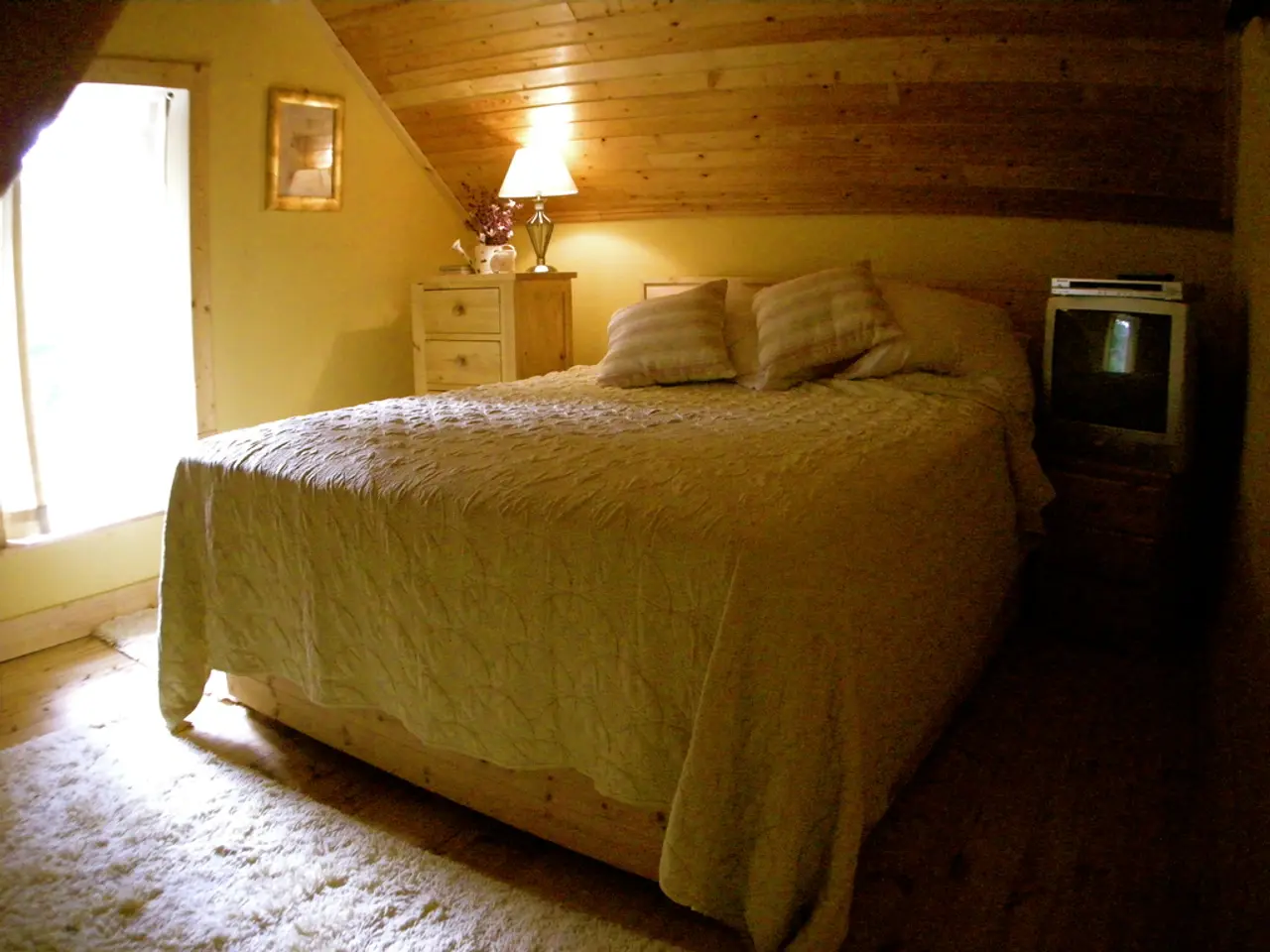Larger apartments are emerging in cities, despite the city's current turmoil - Urban residential growth persists amidst city-wide stresses
In Germany, the average apartment size has grown significantly over the years, reaching 94 square meters by the end of 2024. This expansion is largely due to societal changes such as population aging and the increase in single apartments, according to experts.
Despite this increase in new construction, Germany is estimated to be short of hundreds of thousands of apartments. The Federal Chancellor Friedrich Merz (CDU) puts the housing shortage at '500,000 and more.'
The growth in apartment sizes is evident when comparing the current average living space per capita of 49.2 square meters to just 35 square meters in 1991. This rise of 2.7 square meters per person since 2014 is a clear indication of the trend.
The Federal Statistical Office reports that there were around 43.8 million apartments in Germany by the end of 2024, 0.5% or 238,500 more than a year earlier. However, the housing stock only grew by around six percent to 2.5 million apartments between 2014 and 2024.
More than half of these apartments (23.5 million) were in multi-family homes. On average, nearly two people lived in one apartment.
The Ifo Institute expects around 205,000 apartments to be completed this year, about a fifth fewer than in 2024. This shortfall in housing supply has led to rising rents, especially in cities, due to high demand for housing.
Max Herbst, the founder of the Frankfurt-based FMH financial consulting firm, attributes the trend of increasing living spaces to the aging of society. He believes that people living alone prefer larger apartments and find less than 40 square meters not enough.
The new federal government, led by the SPD, aims to boost housing construction. Federal Minister of Housing Verena Hubertz plans to speed up approval procedures, improve tax incentives, and enable the designation of more building land. Her mantra is 'The construction machinery must roll again and we must build, build, build.'
The government also aims to achieve around 200,000 housing unit completions per year by 2025, supported by renewed EH55 energy efficiency subsidies. In 2024, about 252,000 units were newly built.
However, the issue of rising rents remains a significant concern. Many older people in Germany prefer to live alone on larger apartments built 30 or 40 years ago, but seldom choose to move to smaller apartments in their old age. This trend of single households, with over 50% of households in some metropolises like Hamburg being single households, further exacerbates the housing shortage.
In conclusion, while Germany has seen an increase in average apartment size, the country still faces a significant housing shortage. The new government's efforts to increase housing construction and improve energy efficiency are steps in the right direction, but addressing the rising rents and the preference for larger apartments among single households will be crucial in alleviating the housing crisis.
Read also:
- Trade Disputes Escalate: Trump Imposes Tariffs, India Retaliates; threatened boycott ranges from McDonald's, Coca-Cola to iPhones
- Li Auto faces scrutiny after crash test involving i8 model and a truck manufacturer sparks controversy
- Celebrated Title: Cheesemakers Blessed Upon
- Construction and renovation projects in Cham county granted €24.8 million focus on energy efficiency




